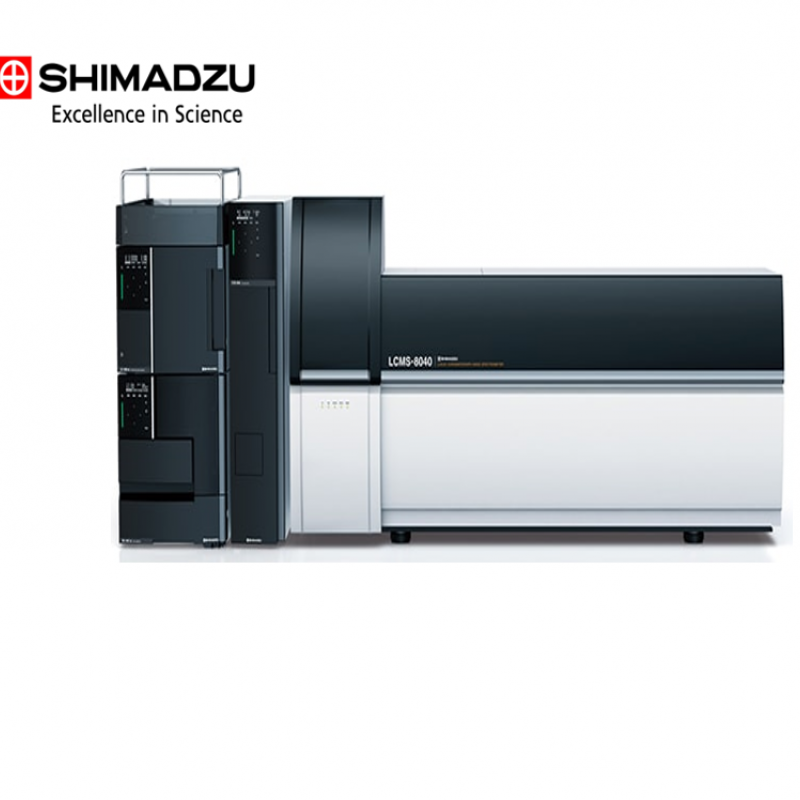
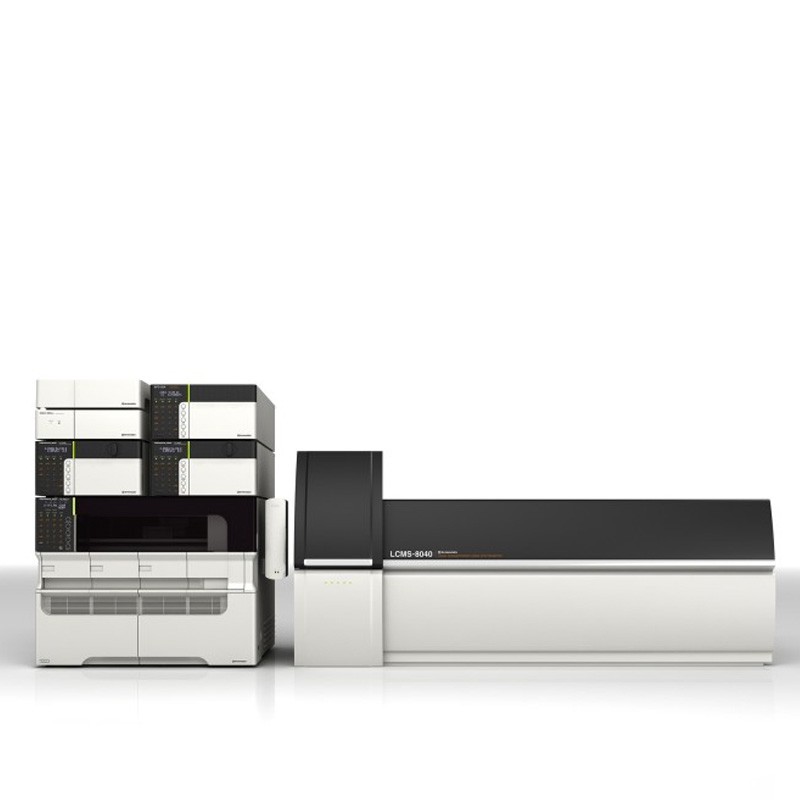
The Triple Quadrupole Liquid Chromatography Mass Spectrometry LCMS-8040 has been developed to provide the same high speed but higher precision analysis as Shimadzu's entry model LCMS-8030. Ultra fast MRM transition speeds up to 555 MRM per minute can be achieved. With the new UF-Lens ™ and UF-sweeper ™ II collision cell technologies, higher multiple reaction monitoring (MRM) sensitivities can be achieved. Thanks to high precision, different LC / MS / MS applications can be reached.
By incorporating newly improved ion optics and collision cell technology, the Liquid Chromatography Tandem Mass Spectrometer LCMS-8040 provides higher multiple reaction monitoring (MRM) sensitivity. A five-fold increase in sensitivity (reserpine, S/N ratio), as compared with that of LCMS-8030 has been achieved by improving ion focusing and minimizing ion losses between multi-pole lenses. These improvements also yield higher sensitivity for scan mode measurements. This higher sensitivity expands the potential range of LC/MS/MS applications.
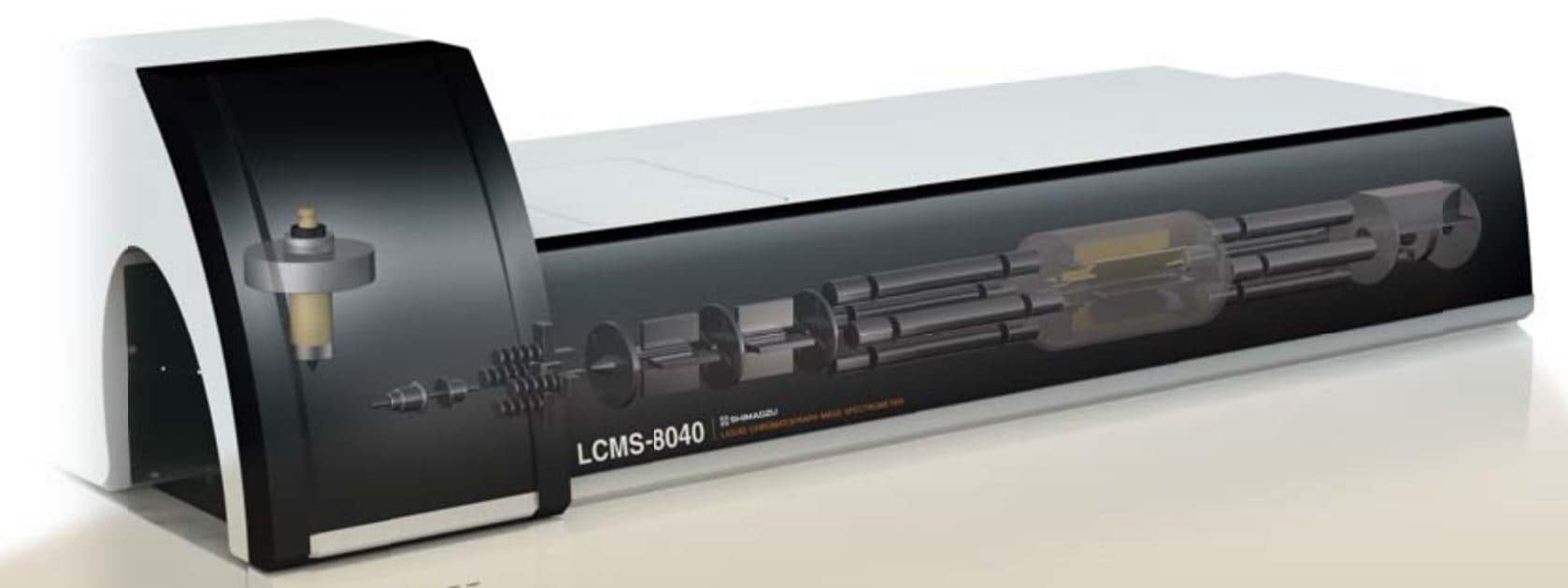
The LCMS-8040 was designed to provide significantly higher sensitivity while maintaining the high speed offered by the LCMS-8030. Ultrafast MRM transition speeds, up to 555 MRMs per second, are achieved by Shimadzu's UFsweeperTMcollision cell technology, proprietary high-precision quadrupole machining capabilities, and unique high voltage power supply technology. In addition, the LCMS-8040 features the fast polarity switching at 15 msec. With this high-speed performance, the LCMS-8040 can dramatically improve analytical throughput.
MRM optimization in Shimadzu's LCMS systems is based on a rapid series of automated flow injection analyses, requiring only minutes to perform. Multiple compounds can be optimized in an unattended sequence, freeing the analyst from tedious work. MRM parameters optimized for the LCMS-8030 can be transferred to the LCMS-8040, making it possible to transfer methods between systems. The LCMS-8040 offers the same ease of maintenance benefits as the LCMS-8030, and all consumables, such as desolvation lines (DL) and ESI capillaries, are interchangeable as well.


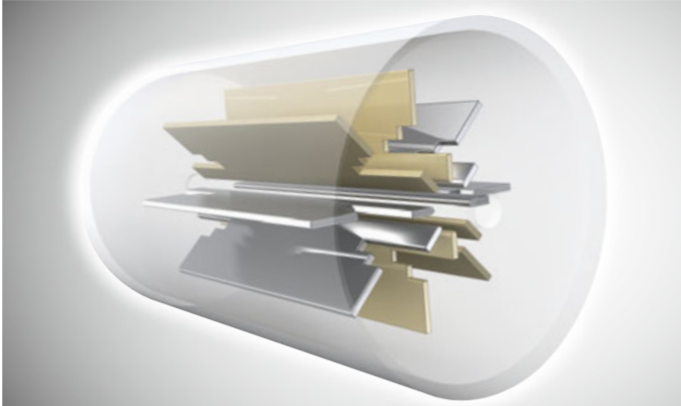
Blood plasma samples were spiked with verapamil and warfarin, and then protein precipitation was carried out according to the pretreatment flow indicated below. The area values from 450 consecutive LCMS-8040 analyses were then plotted. Simultaneous analysis of verapamil by ESI+ and warfarin by ESI− was performed. Chromatograms for the 1st, 250th, and 450th measurements are shown below. This resulted in 1 pg on-column area repeatability of 4.18% for verapamil and 6.61% for warfarin.
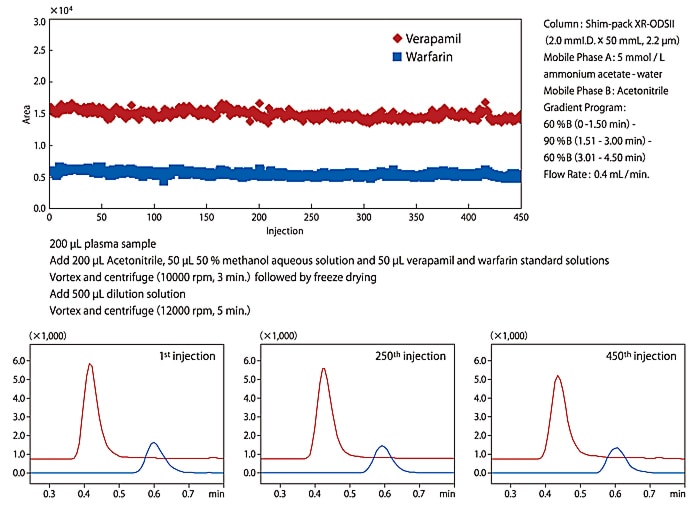
Food Safety and Environmental Analysis: This issue focuses on food safety and environmental analysis, and contains information on two collaborations including an interview with Professor Mondello, working on Comprehensive GC x GC / LC technology and a technical note on multi-residue analysis of pesticides in food, a collaborative work with the Food and Environment Research Agency, UK. As well as the latest news and applications.
In this study, the structural determination of Benzalkonium Chlorides (BAC) in the textile industry and their quantification were determined simply and quickly using the LCMSMS system.
Instrument: LCMS-8030 Liquid Chromatography Mass Spectrometer (LCMSMS)
Determination of genotoxic impurities in 2D-LCMSMS (Co-Sense) system.
Instrument: LCMS-8040 Liquid Chromatography Mass Spectrometer (LCMSMS)
Using the LC-MSMS method, it is possible to perform the analysis of a multi-component complex foodstuff by one injection, reducing sample preparation to a single method. In this study, samples from multitoxin applications are given by Liquid Chromatography Mass Spectrometer (LCMSMS).
Instrument: Shimadzu LCMS-8040 Liquid Chromatography Mass Spectrometer (LCMSMS)In this study, LCMSMS uses taurine analysis, a sulfur-derived amino acid that is frequently used in energy drinks and is derived from semi-essential methionine and cysteine.
Instrument: Shimadzu LCMS-8040 Liquid Chromatography Triple Quadrupole Mass Spectrometer
In this study, qualitative and quantitative analysis of Chemical Compounds with Perflor Group (PFOSs) in textile, leather and paper materials was performed by using LCMSMS system.
Instrument: LCMS-8030 Liquid Chromatography Mass Spectrometer (LCMSMS)